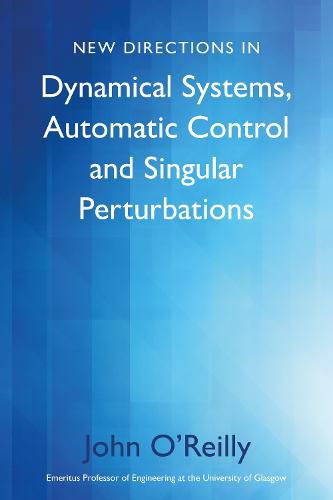New Directions in Dynamical Systems, Automatic Control and Singular Perturbations
John O'Reilly

New Directions in Dynamical Systems, Automatic Control and Singular Perturbations
John O'Reilly
This title is printed to order. This book may have been self-published. If so, we cannot guarantee the quality of the content. In the main most books will have gone through the editing process however some may not. We therefore suggest that you be aware of this before ordering this book. If in doubt check either the author or publisher’s details as we are unable to accept any returns unless they are faulty. Please contact us if you have any questions.
With this short book, Professor O'Reilly brings his considerable engineering experience to bear upon three subjects close to his heart: dynamical systems, automatic control and singular perturbations. New results of a fundamental and unifying nature are presented in all three areas. New directions are thereby established. Due care is taken of historical context and motivations. This highly readable book with its compelling physical narrative is divided into two parts, Part 1 and Part 2, for the reader’s convenience. Aimed primarily at engineers, this unusually affordable book should be read by every postgraduate.
Part 1 sets out the fundamental conditions that small-signal physically realisable dynamical system models must satisfy. These fundamental conditions are causality and non-singularity. They apply to all small-signal dynamical system models, as for example arise in electrical networks. Another important example is automatic control. Part 1 of this book also re-interprets the classic works of Nyquist and Bode to establish that the uncontrolled system must also not be singular; nor must the controlled system encounter singularity. But Part 1 goes much further. It shows that these fundamental properties, in particular non-singularity, must obtain for all small-signal system models regardless of how many inputs and outputs the system happens to have. So, small-signal automatic control for instance is all of a piece. It is that simple.
As for singular perturbations in Part 2, these little fellows simply pop up all over the place, sometimes where you least expect them. New associated low-frequency and high-frequency system transfer-function models are presented with almost insolent ease. Part 2 achieves for the frequency domain what standard singular perturbation theory does for the time domain. Moreover, even the standard nonlinear singularly perturbed system model does not escape scrutiny. Which model to choose? It could be important. Part 2 is an indispensable aid to modellers across the engineering spectrum seeking generic low-frequency and high-frequency models for what they do.
This item is not currently in-stock. It can be ordered online and is expected to ship in 7-14 days
Our stock data is updated periodically, and availability may change throughout the day for in-demand items. Please call the relevant shop for the most current stock information. Prices are subject to change without notice.
Sign in or become a Readings Member to add this title to a wishlist.


